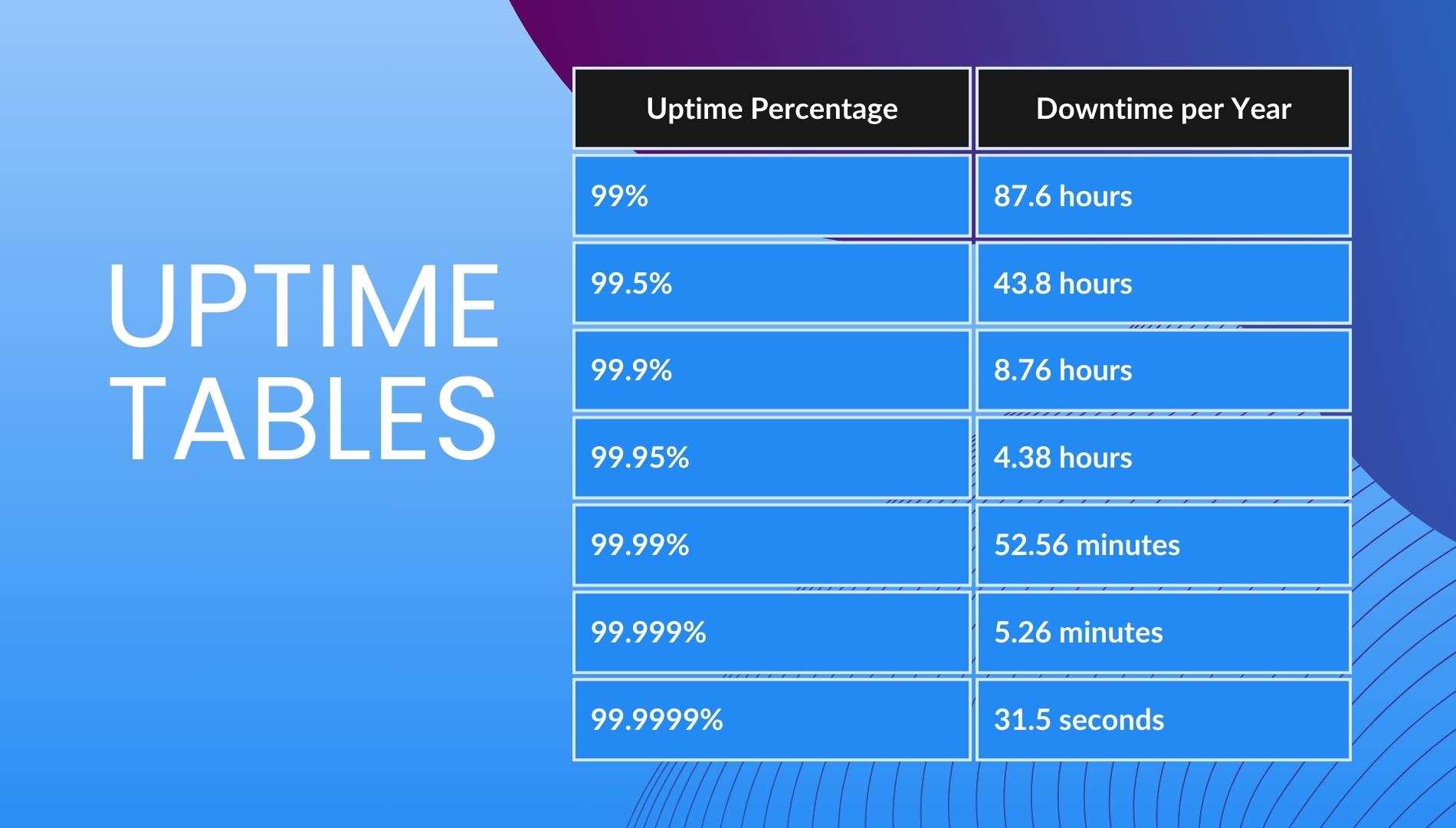What is Uptime?
Uptime refers to the proportion of time a website or online service is fully operational and available to users. It is typically expressed as a percentage, with higher percentages indicating better availability. For example, an uptime of 99.999%, often referred to as "five nines," means the service is guaranteed to be offline for no more than about five minutes in an entire year. This level of reliability is crucial for businesses that depend on constant online presence to serve customers and manage transactions.
Uptime is often a critical component of Service Level Agreements (SLAs), serving as a key performance indicator for the reliability and availability of web services. SLAs are formal contracts between service providers and their clients that specify the expected level of service, including how much time a system should be operational. Uptime guarantees within these agreements set clear expectations for availability, usually expressed as a percentage, such as 99.9% uptime annually. This metric not only underscores the provider's commitment to maintaining high standards but also establishes a basis for accountability. Should the agreed-upon uptime not be met, SLAs typically outline remedies, such as compensations or service credits, providing clients with assurance and protection against unexpected downtimes that could impact their business operations.
Why is Uptime Critical in Web Content Management?
- Customer Access and Satisfaction: In sectors like e-commerce, where customers expect to make purchases at any time, downtime can lead to a direct loss of sales as customers may not be able to complete their transactions. Moreover, frequent downtime can harm a business's reputation, leading to decreased customer trust and satisfaction.
- Financial Impact: For financial services, uptime is even more critical due to the nature of the transactions involved. Downtime can mean not just lost sales but also significant disruptions in trading, fund transfers, or accessing critical financial information, potentially leading to financial losses and regulatory compliance issues.
- Operational Continuity: In many industries, continuous access to digital resources and services is necessary to ensure smooth operational continuity. Downtime can disrupt workflows, communication, and access to essential data, affecting productivity across the board.
- SEO and Visibility: Search engines favor websites with excellent uptime because it provides a better user experience. Frequent downtime can affect a website's SEO ranking, making it harder for potential customers to find the business online.

